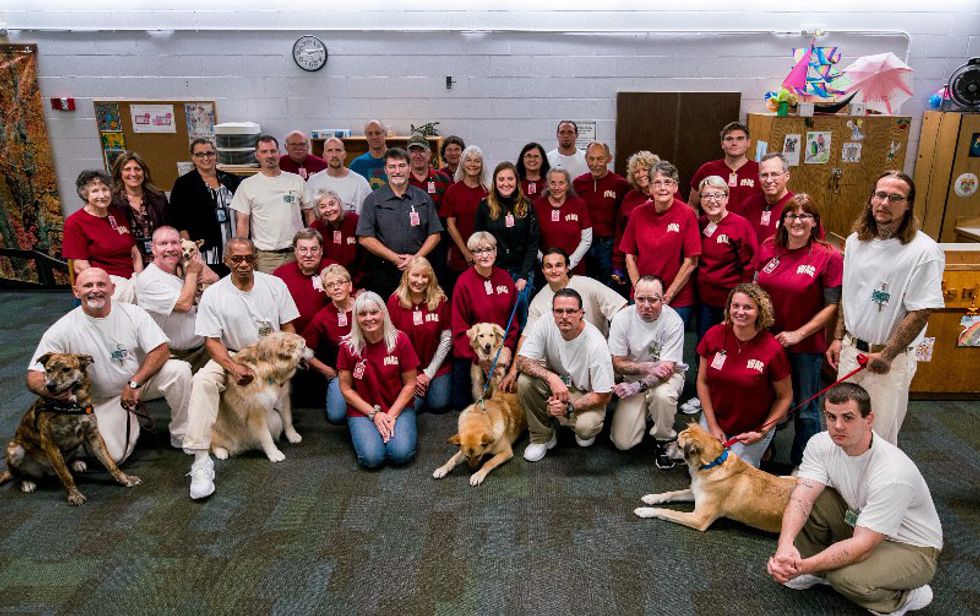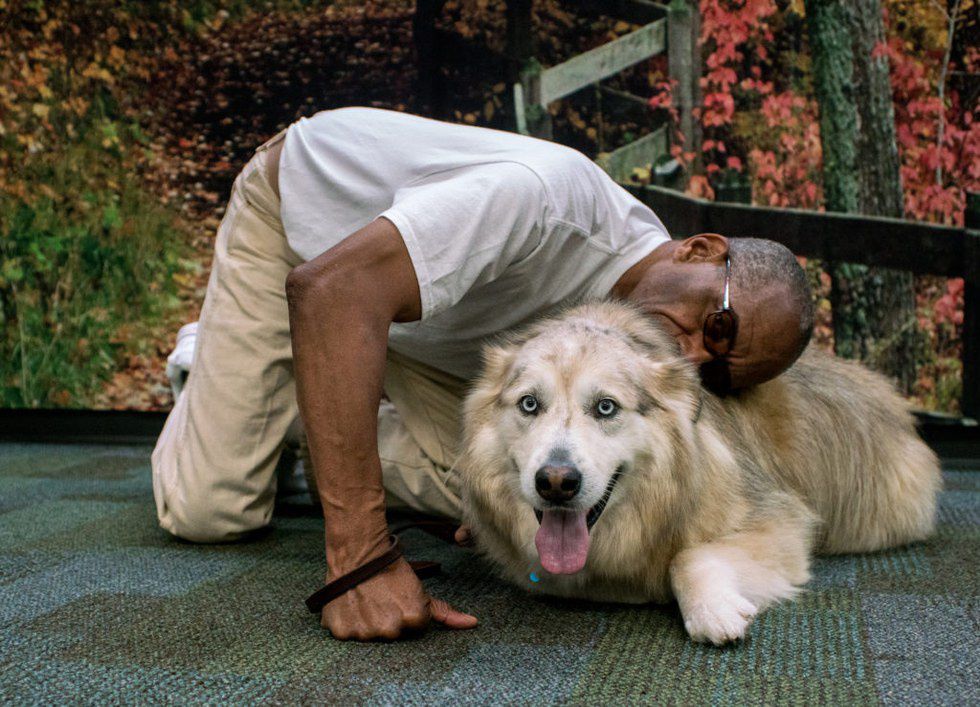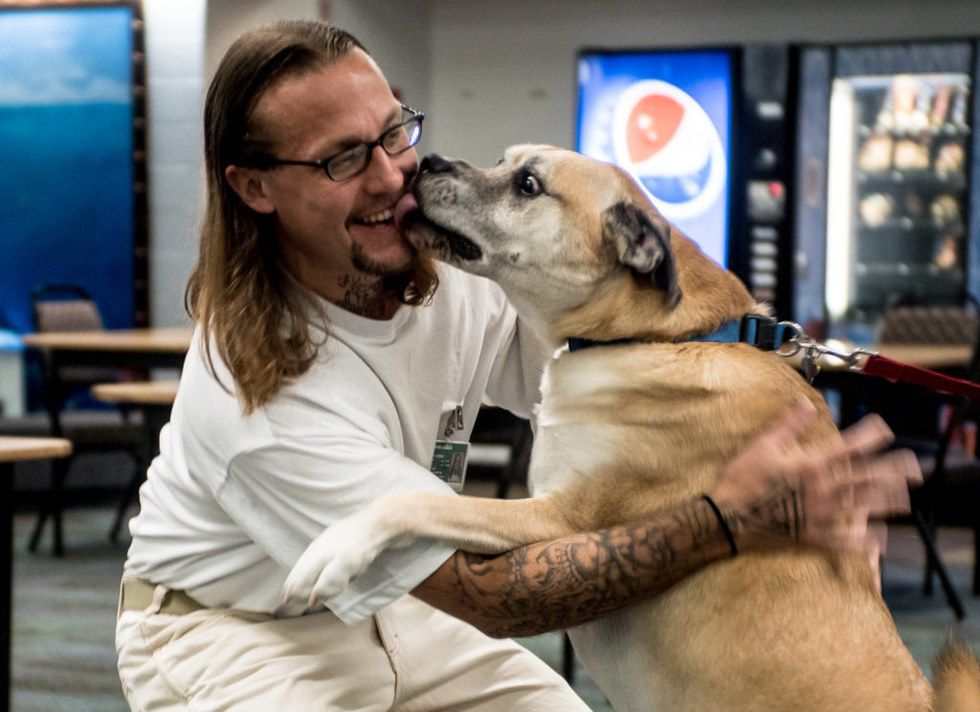by Sara Lindberg, Contributor
Tucked away in the far northwest corner of Washington State, the Clallam Bay Corrections Center (CBCC) is giving inmates and a few furry friends a second chance.
By providing an opportunity for inmates to give rescued dogs a new lease on life, this prison program is changing the lives of all involved.
The prison training program got its start when staff at CBCC approached Sequim-based Welfare for Animals Guild (WAG), asking if they would consider partnering with them on a program that pairs inmates with rescue dogs that have unique behavioral problems.
“We had no idea what it would entail, but we knew it had to be a win-win for everyone, we just didn’t realize how powerful this program would turn out to be,” said Barb Brabant, Guild president.
WAG is a 501(c)3, dog rescue organization staffed exclusively by unpaid volunteers and is supported entirely through donations. The program started in March of 2012 with three dogs and ten handlers, and now has approximately eight dogs in training and sixteen handlers (inmates) at a time.
Program Dogs Meet Their Handlers
Inmates are given dogs that are typically not adoptable. Sometimes that means a large, energetic dog with no manners or one who has been abused or neglected. These dogs live with the handlers 24/7 in their cells for a minimum of six weeks. “Everything we do has to be worked around the care and the needs of the dogs,” said inmate/handler Roy Stillwagon.
“When I first get a dog, I bond with it for the first few days. I let them get used to being in the cell with me and let them get comfortable in their new surroundings. If the dog is fearful, I will take as long as it needs before I even start training or bringing it around other people. It all depends on the dog and its needs. They set the pace of the training,” explained inmate/handler Douglas Gallagher.
The handlers are trained by a trainer who is skilled at basic training and behavior adjustment training (BAT), and can also teach Agility and T-Touch. WAG volunteers go out to the CBCC once a week and hold classes with the handlers and dogs. At this time, they also evaluate how the training is going.
Giving Back and Preparing for the Future
One of the greatest strengths of this program is that it gives the handlers a chance to give back and helps them learn empathy, patience, commitment, selflessness, and how to work as a team.
“It feels really good being responsible for a living creature—doing something that really matters,” shared inmate/handler Charles Graves. “No matter how difficult or frustrating things may be at first, with lots of work, patience, love, and understanding a connection will take place and then it’s just a matter of time before reaching the desired result,” Graves added.
Through training, inmates also learn valuable work skills that can be used upon release. In fact, many are thinking of a career working with dogs. “It has been a positive thing all around. We have reached out and connected with the community,” said Graves.
The touching stories of the handlers and their dogs are endless, but a few stick out in Brabant’s mind. In one touching story, an inmate lay on the ground next to the first dog brought into the program (a yellow Lab), gently petting the dog, while tears streamed down his face. Having had no visitors during his time in prison, this dog was the first hint of affection this “lifer” had in years.
Then there’s the one about the puppies who come to the prison to learn social skills. “One evening the men were huddled in a tight circle looking at something, which usually isn’t a good thing out there. When the officer approached the circle one of the large, tatted up guys turned to him with his finger up to his lips and said ‘Shhh, the puppies are sleeping,’ and turned back around to watch,” exclaimed Brabant.
“Most of these guys already have amazing observation skills and they take this job very seriously,” Brabant explained. “As the handlers work with the dogs, you can see them softening as they beam with pride at the progress their dog is making. They are very good at assessing the dog and their needs, and in return, the dogs respond to their love and learn to trust.”
It’s apparent that some of these inmates spend more time with the dogs than they do with any friends or family. In a sense, these pups have become family to so many of them.
Graduation from the Program
Parting ways once the dogs are ready to graduate from the program has proved difficult for many of the handlers because of the close connections they form with the dogs. In fact, many of them will tell you that it was their dog that healed them, not the other way around.
“I definitely feel an emotional attachment and can relate to the dogs that come through our program,” shared inmate/handler William Friedrichs. “Prison is not the kind of environment in which emotions such as love, compassion, patience, and generosity can be safely displayed. The dogs that come through here not only provide an opportunity for all inmates to express those emotions, but they also demand it of us. And in doing so, these dogs are helping to heal us as well,” Friedrichs added.
To help ease the transition, most adoptive families will send updates and pictures to share with the handlers. In fact, on September 28, 2016, the incarcerated trainers gathered for a reunion with some of the rehabilitated pups, who were accompanied by their new owners and volunteers from WAG.
Brabant describes the reunion as truly amazing with not a dry eye in the place. “As soon as the dogs entered the room, they knew exactly where they were going and who they were going to see,” Brabant said.
“It’s hard to list all the ways in which this program has changed me. It’s been over three years working with these dogs and all I know is that I’m not the same. This program has made me a better person,” said Friedrichs.






















